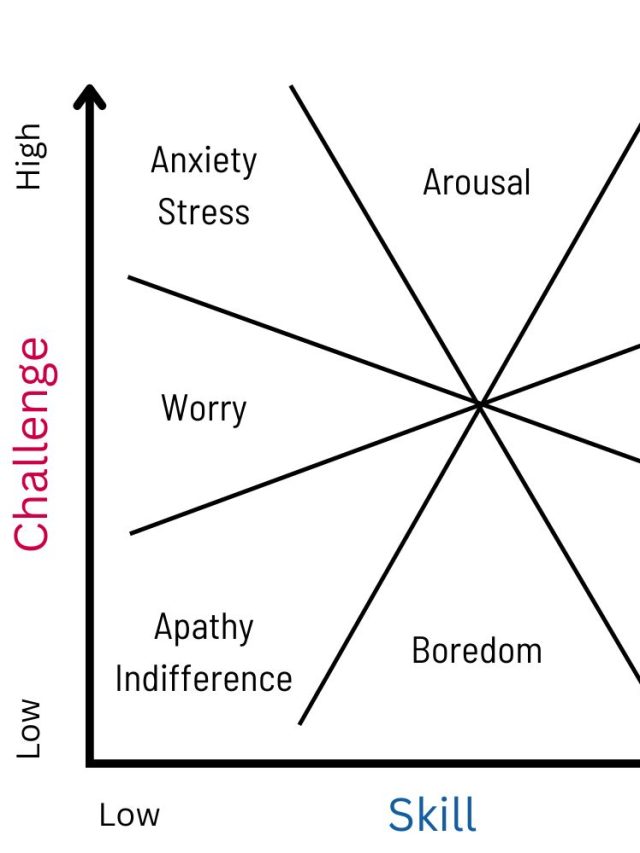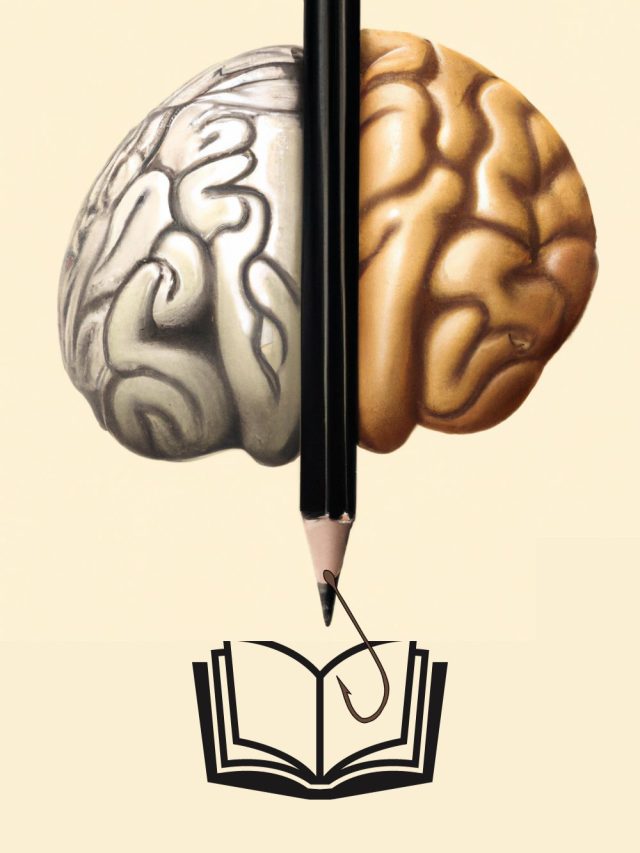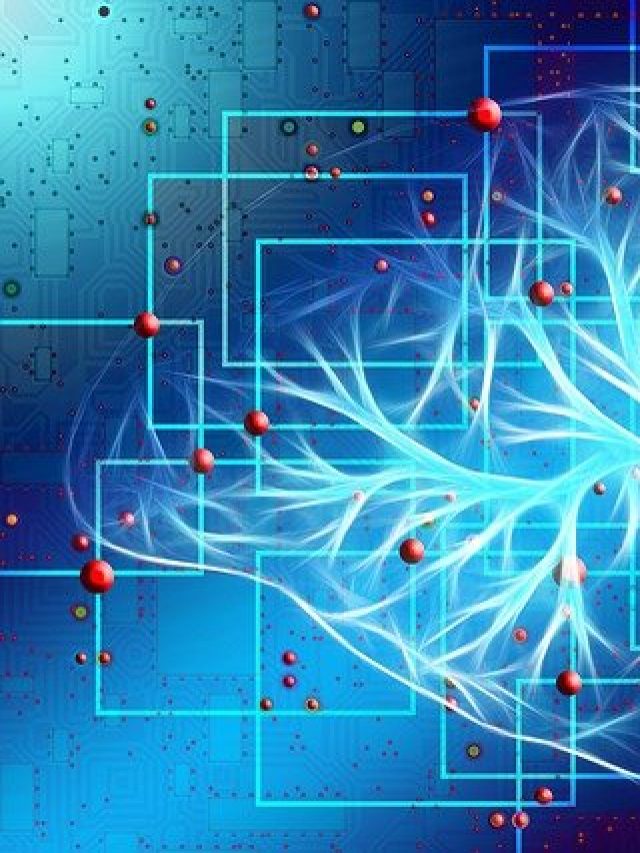Some people say the mind is a universe in itself. Others have argued that the mind is the software and the brain is the hardware. As time went by, we equated the brain to an organism, a computer, the internet, and now, quantum phenomena. Which comparison is correct? Calling the mind a universe is at best a metaphor for its vastness, inaccessibility, and awe. Comparing the brain to a computer or the internet is an analogy where one can say, “my brain’s download speed has become slow” and “I’m not lazy, I’m using my energy saving mode.” These help us communicate better and describe difficult information.
Metaphors are a great way to explain obscure phenomena because we can conceptualize new information in terms we already understand. Analogies allow us to compare the unknown with the known. As a result, metaphors and analogies describe one thing with another thing and convert the unfamiliar into the familiar.
In this post, we’ll look at how metaphors and analogies help us understand the world and how they comment on our existence in the universe.
A good metaphor is familiar. Calling a project manager “the captain of the ship” makes sense because we all know that a captain leads a ship through the seas. If we call a project manager “our own mycelium enabler,” it won’t make sense unless it is familiar. The mycelium network is a vegetative fungal network that breaks down organic resources to distribute in an ecosystem. Unfamiliar metaphors are akin to learning something new entirely. The value of metaphor lies in how well we know the metaphor or analogous concept. The metaphor/analogy approximates new information. It needs to have words, concepts, and processes that link to each other, making it easy to compare them to something new.
The goal of metaphors and analogies is to achieve 7 things:
- Simplify a concept.
- Create a comparison with highlighted differences.
- Define unfamiliar information.
- Reduce ambiguity and structure information.
- Enable learning by using known ideas to accommodate unknown ideas.
- Compress information.
- Substitute something easy for something complex.
This has many, many powerful implications. Metaphors make it easy to understand new science concepts. Metaphors make it easy to bind new knowledge to old knowledge. Heck, new science concepts are themselves often detailed metaphors. We’ll get to that later. Analogies can create empathy by helping other people understand what you are saying in terms they know. It speeds up explanations by reducing them to their simplest form. They compress large chunks of information. Perhaps you can compress this article with a metaphor.
Like we take WinZip for granted, we take our ability to use metaphors for granted. Not just metaphors. Even their sister metonymy, which describes how we use a simple closely related substitute word to refer to something else. For example, “my ride’s here” and “I just got my 6-string” are substitutes for “a cab” and “a guitar.”

You may wonder what the difference between metaphors and analogies is. Researchers say[1] they are similar ideas but have different functions. Metaphors and analogies both draw a comparison between 2 unrelated things to explain one with the other. However, metaphors are focused on implicit content and are slightly subjective, but analogies are more objective, explicit, and precise. “Your energy is the fountain of life” is a metaphor that probably speaks about how energetic one is, but one can’t be too sure. It could be that a person’s potential energy is powering a water fountain that keeps the fish in a pond alive. It could also talk about one’s potential for spreading goodness in life.
Even the classic “heart vs. mind” debate is nothing more than an obscure metaphor.
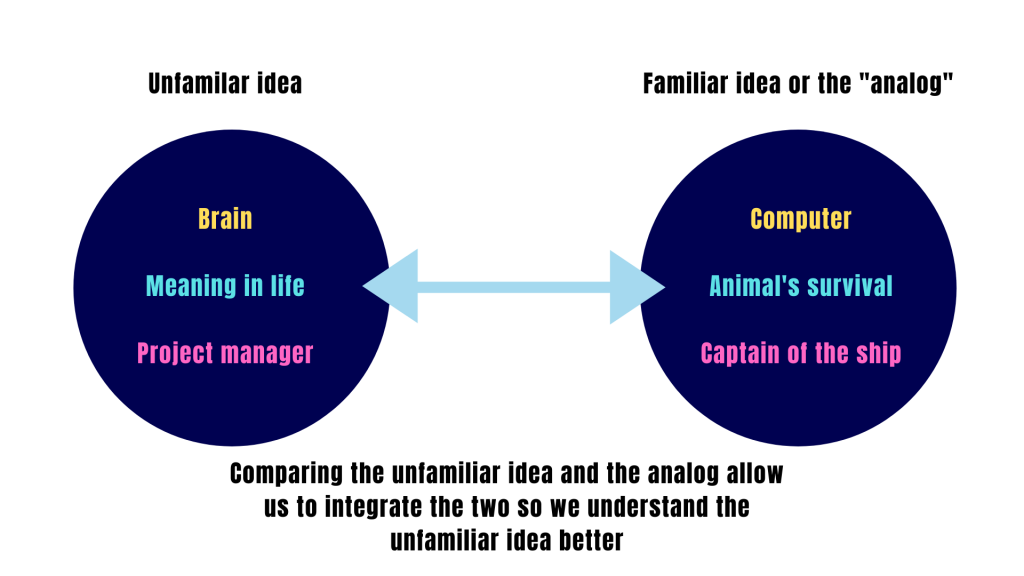
| Metaphor Example: Your energy IS the fountain of life | Analogy Example: The brain is like the internet |
|---|---|
| Direct comparison | Indirect comparison |
| Vague & subjective | Detailed & Objective |
| Captures the essence | Helps to evaluate new things |
| Fuses the unfamiliar and the analog | Creates a relationship between the unfamiliar and the analog |
Taking things literally
Taking metaphors literally can be problematic, but a large portion of the human population – typically neurodivergent people – take things literally and often miss metaphors[2]. In Asia[3], researchers estimate 0.36% of the population is neurodivergent. Also known as being on the spectrum, with or without disability or developmental difficulty. Numbers in America and Europe[4] are higher, upwards of 1%, possibly due to the diagnostic criteria and frequency of testing. In short, millions of humans might not get metaphors, but that’s where analogies take over because neurodivergent people often love details.
“You are my rock,” I said to my girlfriend. That is a metaphor that draws on the “attributes” of the rock, which are being steady and inert. She can’t literally be a rock because she is a person, but the metaphor allows us to infer a lot of unspoken, undescribed, implicit details. In a musical band, the vocalist may be the captain of the ship – a metaphor. But saying, “your skill grows like compound interest,” is an analogy.
Metaphors are literally false. Metaphors need to be chosen carefully to bring out the best information embedded within them. Metaphors need to be like good boxes which can contain yet-to-understand information. Saying our body is the clay and nature is the potter might help kids understand how DNA mutates to create new physical attributes called “phenotypes” that are tested against nature’s forces for survival.
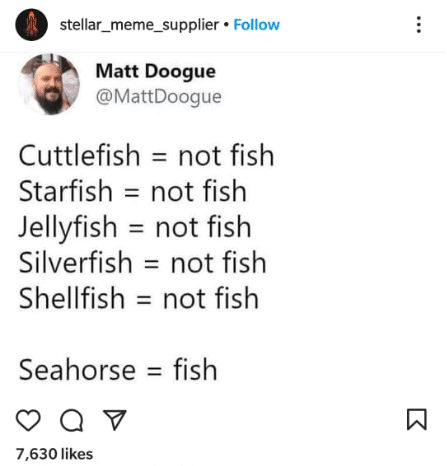
Air puppies, Water puppies, and Land puppies want to be models
Analogies can’t be false or true; they are useful or useless. They highlight only a comparison. Bats are air pups. Seals are water pups. Horses are grass dogs. Calling bats an air dog creates an “analog,” which is a similar concept in a different context (air). The focus is on the relationship between ideas within our understanding of dogs, water, and the identifiable bat.

If we use metaphors for things we don’t understand, we get a vague understanding of something new. If we use analogies, we understand the relationships between components/concepts. Let’s take this further. If we highlight the details and remove the comparison, we get a “model” of a concept. It is a representation of the most important meaningful details of anything. Models can be visual designs, equations, relationships, set of properties, etc. A model is like the sketch of a house with the concept of home being a metaphor and living conditions as an analogy. A model becomes independent of comparison, but it serves the same function as metaphors and analogies – helps us understand something. In analogies and metaphors, we rely on existing knowledge to understand new concepts. That existing knowledge could be a model or a set of models. Models only improve the quality of our understanding which can be refined with newer analogies and metaphors. This, in fact, is a popular thinking strategy called mental modeling.
In physics, models describe phenomena, but they aren’t the phenomena themselves. Just like metaphors and analogies, we don’t directly understand something new. We learn about new information via models, analogies, and metaphors. We’ve possibly done this right since childhood. When knowledge builds upon itself, we are using one of the 3. Most commonly, analogies and models. However, a number of fascinating things like myths, religion, spirituality, impossible scenarios like the afterlife, and going inside a black hole are completely accessible as analogies and metaphors, not models.
The depth of our perception
We introduce constructs as we go deeper. Constructs are like concepts, just vaguer and often intangible. Concepts can be described easily with a lot of real-world connections. Constructs become abstract and can be observed only indirectly. We use mathematics, words, and implied behavior to understand constructs and concepts. For example, love is a construct indirectly described by our behavior, and dating is a concept directly described by our behavior. Models are often built out of concepts and constructs, unlike analogies and metaphors, which are built out of comparisons. “The Nokia phone is like Thor’s hammer” is a comparison between unrelated concepts. a2 + b2 = c2 is a model which is independent of other concepts. But… models can be used as an analogy. A model of how memes spread can describe how a pandemic starts. Both involve the “virality” of an object.
We scanned metaphors at multiple levels and that says something about how our brain processes information. A well-established theory called the construal level theory tells us how a concept can mean very different things depending on how deeply you process it. A high construal level is vague and abstract, just like a metaphor. A low construal level is detailed and concrete. A OnePlus 5t phone is low construal because it is a concrete object. But “a communication device” is high construal because it is vague and more abstract. If we apply the construal level theory to any “model,” we can draw appropriate analogies and metaphors.
Every concept, object, idea, notion, and invention has a construal level. We just process things at different levels. Even political ideologies like Left vs. Right are high construals, but the real differences lie in the content – what we do against racism, how we value privacy, how we help the unfortunate, how much right we bestow over our bodies, etc. Metaphors try to appeal to high construal levels, making them subjective and vague. Analogies often take things to lower construals by comparing details. And models, which are typically mental representations or equations or visual designs, can be of any construal level.

What does this say about the universe?
- Can we say that the great mother birthed the universe (metaphor)?
- Or can we say the universe bloomed out of nothingness like an unsuspecting seed blooming into a forest (analogy)?
- Or can we say…”We don’t know, but in just a few moments after whatever happened, ℒ = −¼FμνFμν + iψ̄D̸ψ + ψiyijψjφ + h.c. + |Dμφ|2 − V(φ) started happening.” That’s called the Lagrangian, and it describes the state of the universe. Trust me, I totally
understandit.
In all 3 cases, we compressed a complex problem into an easy one in terms any non-expert will understand. Regardless of what content the metaphor has or what analogy we use to describe the universe, it is our perception of what happened, and the practical question becomes – which version do you accept as reality? Analogies and metaphors are only substitutes for a deeper level of understanding. In the decision sciences, this is called attribute substitution – we substitute our evaluations with something easier if the original information is complex. We substitute the real aspect of the universe with a metaphor that is easy to digest. None of the 3 cases directly give us the universe. They only represent important parts of it. We mentally only access our approximate perception of the world. Our mental experiences boil down to perceptions, not interactions. We can’t confuse the map with the territory, but all we may have access to is the map even though we live in the territory.
In a previous article, I wrote about sense-making, where I describe sense-making as an after-the-fact explanation of experiences. Here, I introduce a concept construct called “knowledge-making,” where we use metaphors, analogies, and models to build knowledge to then make sense of our experiences. In a way, knowledge-making enables sense-making. The way we build knowledge, technically, is called cognition (more on that here). And when we build it, we see it through a construal level of our choosing.
Science gives us models of phenomena that we can describe. We refine them to the point they make precise predictions that are correct whether we like them or not. But the way science does it is by using models, which we developed using analogies and thoughts about metaphors that gave unique insights. Still, science gives us a representation of reality, not the reality itself. While embedded in it, do we, then, have any access to reality? Or do we stay satisfied with metaphors, models, and analogies? Looks like we try to make sense of a reality without direct access to it.
Our existence, while extremely real as demonstrated by birth and death cycles that don’t care about perceptions or feelings, gets intangible very quickly. We build new ways of exploring the world using analogies, metaphors, and models. Even our brain reflects this in biology with neural reuse[5]. It appears that our brain has evolved into a general-purpose machine that uses existing neural circuits for something new and then modifies them for more novel uses. It appears like a fundamental behavior of the brain – use a neural circuit for one job, then adapt, change, and repurpose for something newer. Almost like moving through one’s career. If I were to draw another metaphor – the brain lives our life through adaptations, change, and repurposing. It makes us think in new ways for which we use metaphors, for which we reuse neural circuits. And all of this looks like a cause and effect of thinking about the universe in more sophisticated ways.
Neural reuse is fascinating because it may explain why playing TETRIS can improve empathy. It appears like they share a common neural circuit. It’s not just empathy. Perceiving moral beauty and physical beauty may also share neural circuits. An amputated hand’s neural circuits may get repurposed[6] and serve other parts of the body. This is on top of the new neural connections we grow to learn music, language, art, and TikTok dances. Neural reuse appears to give us all human tier skills like teaching, language, coding, and empathy.
Speaking of empathy, metaphor/analogy is empathy between two data in one’s head. Models, on the other hand, are always work-in-progress.
This whole article is full of odd metaphors and analogies with a few diagrams depicting models of abstract concepts. What does that tell us? Metaphors, analogies, and models give us access to the deeper layers of fascinating phenomena. We need them to understand new concepts, especially when they get vague. Because, right now, that’s all we might have access to. That’s how we explore ourselves, the universe, and everything in between. Depending on what construal level we choose, we get a grand unified theory or empty thoughts.
Sources
[2]: https://www.sciencedirect.com/science/article/abs/pii/S0273229720300319
[3]: https://www.sciencedirect.com/science/article/abs/pii/S0165178119311850
[4]: https://neurologyindia.com/article.asp?issn=0028-3886;year=2019;volume=67;issue=1;spage=100;epage=104;aulast=Chauhan#ft1
[5]: https://ir.lib.uwo.ca/brainpub/42/
[6]: https://www.ncbi.nlm.nih.gov/pmc/articles/PMC5983333/

Hey! Thank you for reading; hope you enjoyed the article. I run Cognition Today to paint a holistic picture of psychology. My content here is referenced and featured in NY Times, Forbes, CNET, Entrepreneur, Lifehacker, about 15 books, academic courses, and 100s of research papers.
I’m a full-time psychology SME consultant and I work part-time with Myelin, an EdTech company. I’m also currently an overtime impostor in the AI industry. I’m attempting (mostly failing) to solve AI’s contextual awareness problem from the cognitive perspective.
I’ve studied at NIMHANS Bangalore (positive psychology), Savitribai Phule Pune University (clinical psychology), Fergusson College (BA psych), and affiliated with IIM Ahmedabad (marketing psychology).
I’m based in Pune, India. Love Sci-fi, horror media; Love rock, metal, synthwave, and K-pop music; can’t whistle; can play 2 guitars at a time.

